- Remittance
- Exchange Rate
- Stock
- Events
- EasyCard
- More
- Download
- Sixth

Top 20 Star ETFs in the U.S. Stock Market for 2024: Which is Suitable for Beginners?
The ETF (Exchange-Traded Fund) market in the U.S. is well-developed, offering a variety of options including index combinations, industry sectors, emerging markets, commodities, bonds, real estate, and various leveraged and hedging operations. These products allow investors to participate with small amounts of capital during trading hours. With the diverse range of ETFs available in the U.S. stock market, they now cover most of the hot money flows in the market. This enables even retail investors with limited capital to capture these flows, or to position themselves in specific growth or defensive sectors, thus following the upward trend or adopting a hedging strategy.
What is an ETF?
ETF stands for “Exchange-Traded Funds.” It allows investors to buy and sell these funds by entering relevant stock numbers on various U.S. brokerage and banking platforms during trading hours. The transaction fees and taxes are the same as those for individual stocks, and they are also referred to as “in-market funds.”
Why Do Retail Investors Choose to Invest in ETFs?
When choosing between investing in ETFs or individual stocks, retail investors face several considerations. Both investment methods have their pros and cons, making them suitable for different strategies and risk tolerance levels.
ETFs typically track an index or a basket of stocks, meaning that investing in an ETF is equivalent to indirectly investing in multiple companies. This greatly diversifies the risk associated with individual stocks. If one component stock underperforms, its impact is offset by the performance of other component stocks. On the other hand, investing in individual stocks means that all the risk is concentrated on one company. If that company underperforms, the investor could face significant losses.
The management fees for ETFs are generally lower than those for actively managed funds, as most ETFs are passively managed and have lower costs associated with tracking market indices. Additionally, investing in ETFs does not require the time and expenses needed for research and stock selection. While direct investment in individual stocks incurs no management fees, investors must devote time and effort to research and analysis. Frequent trading of individual stocks can also lead to higher transaction fees.
ETFs are suitable for long-term investments and overall market participation, especially when investors have confidence in the entire market or a particular industry. ETFs help investors achieve market-average returns through index investing, without worrying about individual stock volatility. Conversely, investing in individual stocks is more suitable for those who can identify potential quality stocks and are willing to take on higher risks. Individual stock investments can potentially yield returns far above the market average but also come with significant risks.
In summary, while both ETFs and individual stock investments have their advantages, ETFs offer significant benefits for retail investors, including risk diversification, low costs, high transparency, flexible trading, and time savings. ETFs are particularly well-suited for investors who want to participate in the market in a simple and effective way, enjoy long-term growth, and are not willing to take on the unique risks associated with individual stocks.
Below is a list of the top 20 ETFs in the U.S. stock market for 2024, followed by detailed introductions to each:
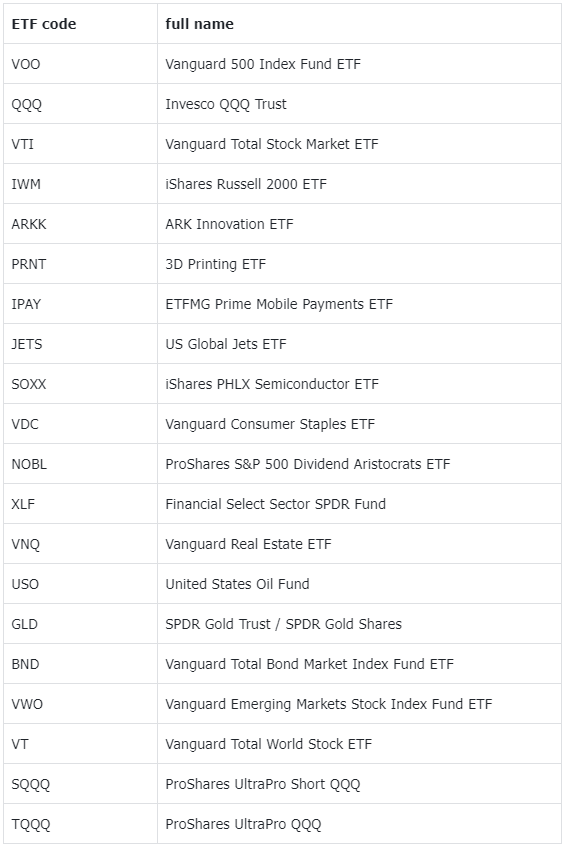
Tracking the S&P 500 Index ETF: VOO (Vanguard 500 Index Fund ETF)
VOO tracks the S&P 500 Index, which represents 500 large companies in the United States. It essentially covers large companies across various industries in the U.S., making it one of the indices that best represents the overall stock prices of American companies. VOO includes well-known tech giants like Apple and Microsoft, as well as major companies from other industries like JPMorgan and Home Depot. When investors purchase an ETF linked to the S&P 500, it is essentially like buying shares in all major U.S. companies.
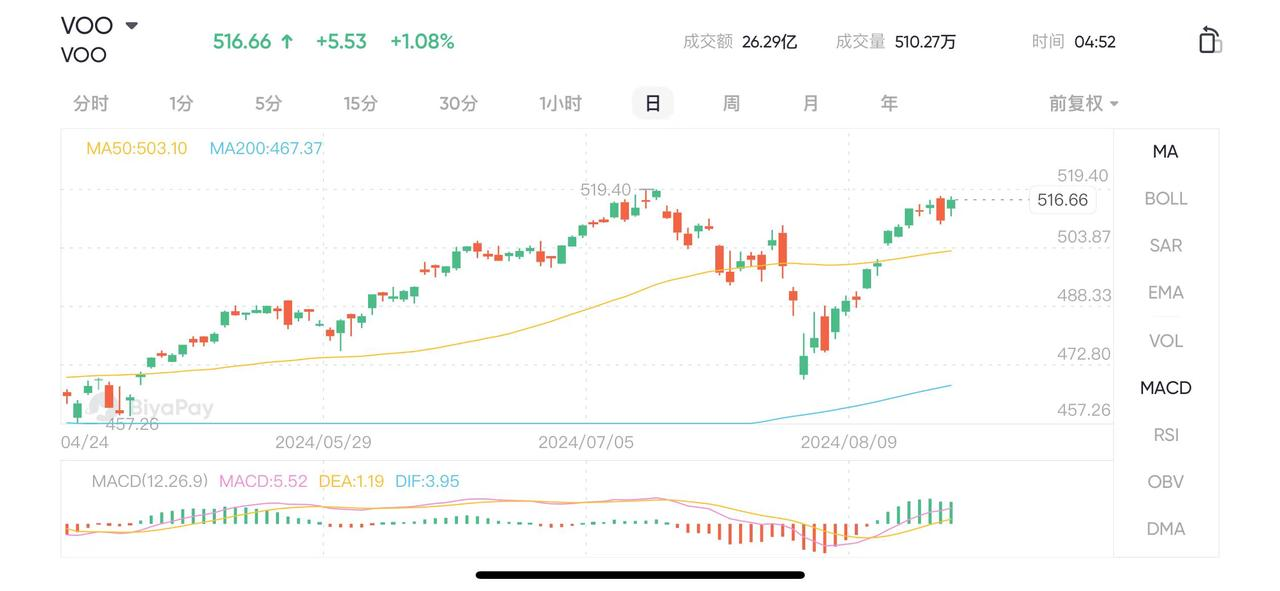
- ETF Code: VOO
- Issuer: Vanguard Equity Index Group
- Total Management Fee: 0.03%
- 3-Year Return: +8.02%
- 1-Year Return: +22.63%
- 3-Month Return: +4.28%
In addition to VOO, other ETFs linked to the S&P 500 include SPY, IVV, and SPLG. These options differ in terms of management fees and tracking errors.
Comparison of VOO, SPY, IVV, SPLG
What are SPY, IVV, and SPLG?
SPY is an ETF launched by State Street Global Advisors; IVV is provided by iShares; and SPLG is offered by SPDR State Street Global Advisors. Like VOO, SPY and IVV also track the S&P 500 Index, allowing investors to achieve returns similar to the S&P 500 without needing to buy shares of all 500 companies.
Comparison of VOO, SPY, IVV, SPLG VOO, SPY, IVV, and SPLG function similarly, enabling investors to hold shares in 500 large U.S. companies through a single ETF purchase. However, it’s important to note the operational costs of each ETF. Below is a cost comparison for VOO, SPY, IVV, and SPLG:
Cost Comparison of VOO, SPY, IVV, SPLG
- S&P 500 ETF
- Annual Expense Ratio (Net Asset Value)
- SPLG: 0.02%
- VOO: 0.03%
- IVV: 0.03%
- SPY: 0.09%
In U.S. stocks, the “Annual Expense Ratio (Net Asset Value)” typically refers to the expense ratio of a fund or investment product, a term commonly used in mutual funds and ETFs. It represents the ratio of fund management and operational expenses to the fund’s total net assets, usually expressed as an annual percentage.
For example, if an ETF’s annual operating expenses are $1 million and its average net assets are $100 million, the expense ratio would be 1%.
If you are a cost-conscious investor, the low fees of VOO, IVV, and SPLG might be more attractive than SPY. Conversely, active institutional investors might prefer SPY’s high liquidity, which facilitates frequent trading.
Tracking the Nasdaq 100 Index ETF: QQQ (Invesco QQQ Trust)
QQQ aims to track the Nasdaq 100 Index, which includes 100 large non-financial companies listed on the Nasdaq in the U.S., predominantly focused on technology stocks, including many U.S. tech giants collectively known as “FAANG.” While the Nasdaq 100 Index has grown rapidly in recent years, investors should be aware that QQQ’s focus on tech stocks can capture the sector’s upward trends but also comes with weaker risk diversification.
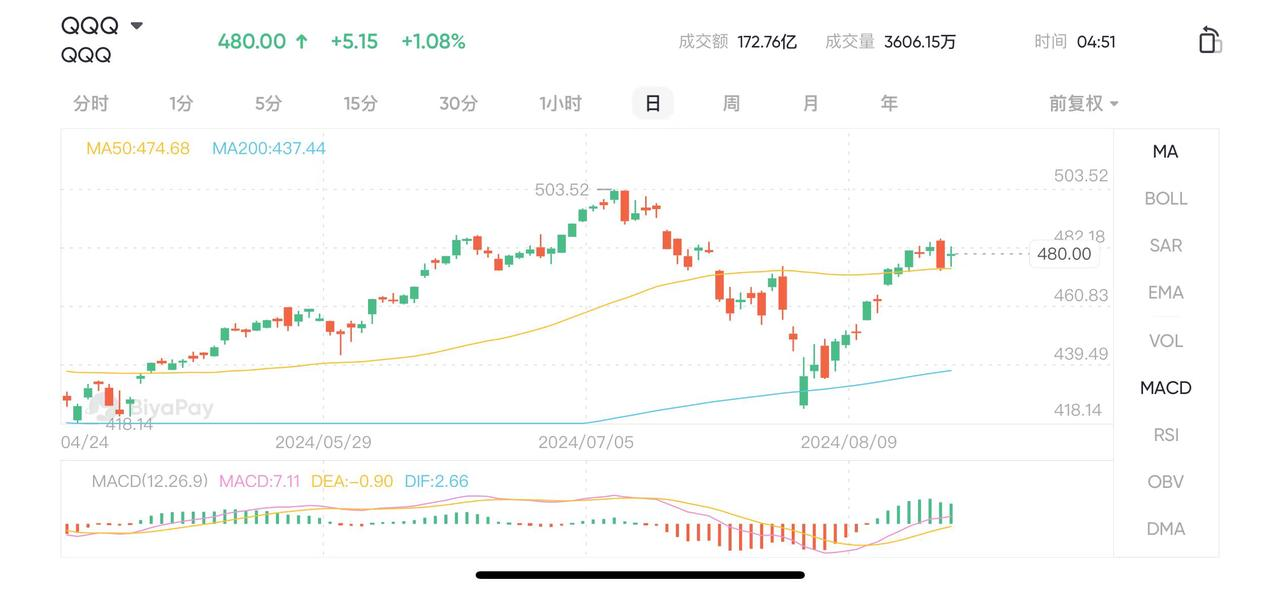
- ETF Code: QQQ
- Issuer: Invesco
- Total Management Fee: 0.20%
- 3-Year Return: +8.62%
- 1-Year Return: +32.47%
- 3-Month Return: +1.93%
Tracking the U.S. Total Market Index ETF: VTI (Vanguard Total Stock Market ETF)
VTI encompasses the performance of all U.S. companies, aiming to track the CRSP US Total Market Index, which includes over 3,500 large, mid, and small-cap companies across the U.S. The advantage of VTI is that it achieves a high level of risk diversification across all U.S. companies. However, VTI’s strength and weakness lie in its diversification; with only about 26% of its holdings in the tech sector, the rapid rise in tech stocks like Tesla has limited its upward movement.
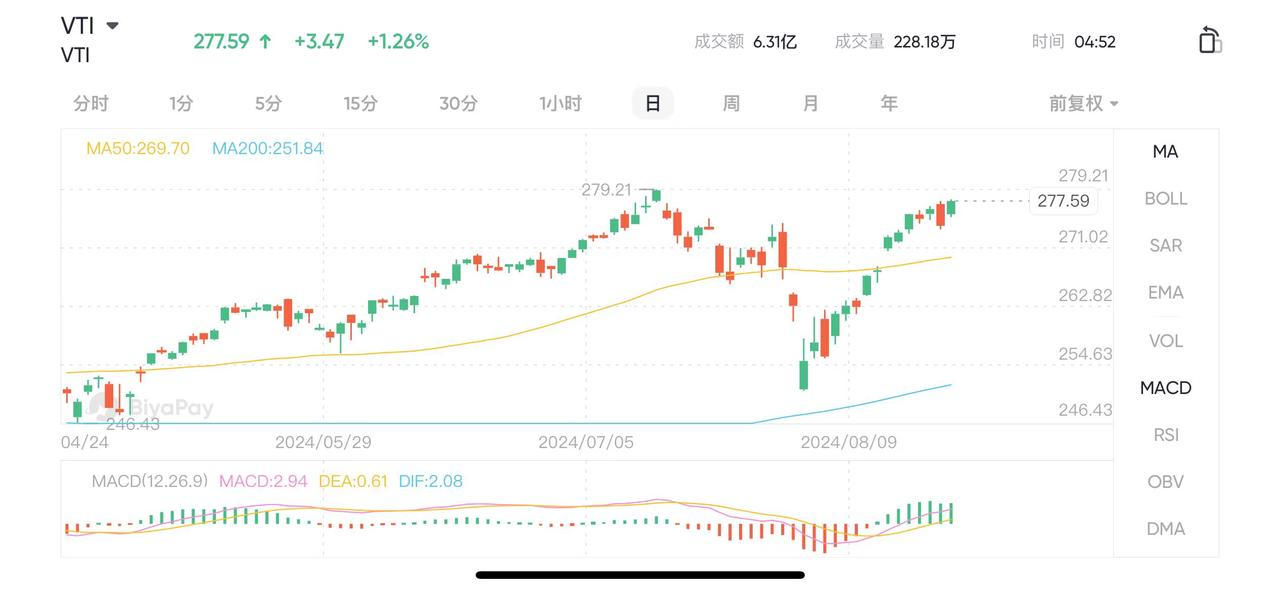
- ETF Code: VTI
- Issuer: Vanguard
- Total Management Fee: 0.02%
- 3-Year Return: +6.22%
- 1-Year Return: +22.38%
- 3-Month Return: +3.99%
Tracking the U.S. Small-Cap Index ETF: IWM (iShares Russell 2000 ETF)
Besides traditional U.S. indices like the S&P 500 and Nasdaq-100, investors can also consider the Russell 2000 Index, representing small-cap companies in the U.S. It comprises the 2,000 smallest listed companies in the U.S. and primarily reflects the state of small and medium-sized enterprises. For example, during economic turmoil from 1999 to 2014, the Russell 2000 outperformed the S&P 500.
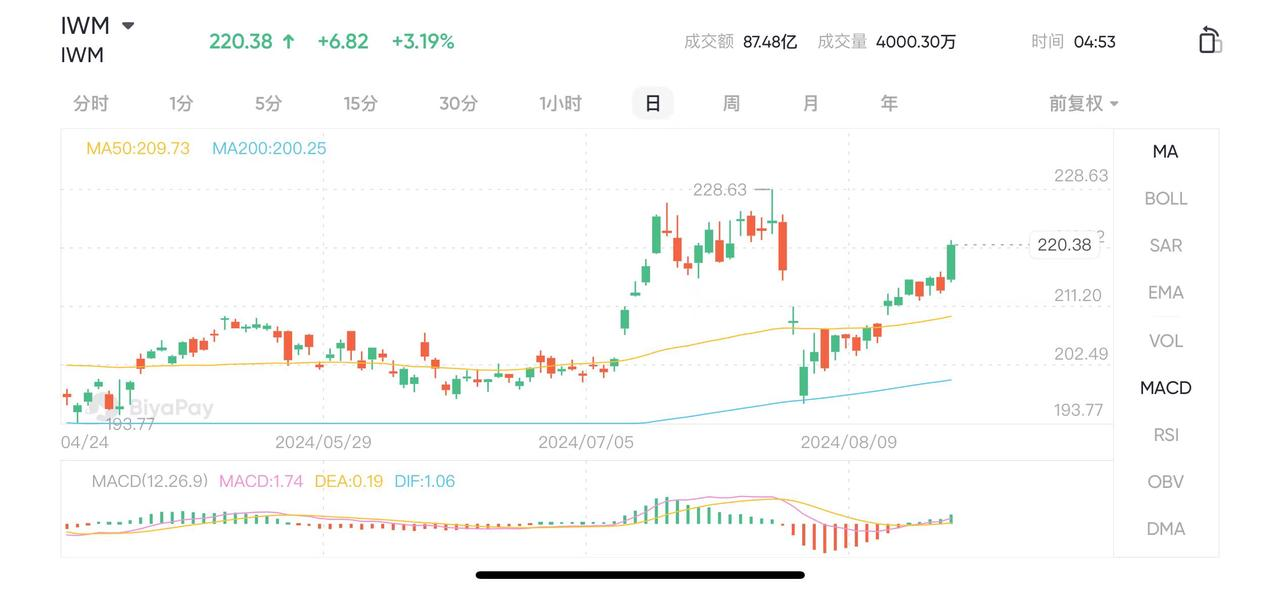
- ETF Code: IWM
- Issuer: iShares
- Total Management Fee: 0.19%
- 3-Year Return: -3.28%
- 1-Year Return: +13.13%
- 3-Month Return: +1.70%
Innovation Sector ETF: ARKK (ARK Innovation ETF)
Led by Cathie Wood, ARK Invest focuses on revolutionary innovation as its core investment theme. ARKK can be considered a combination of multiple innovation sectors under ARK Invest: it includes themes like “robotic automation” under ARKQ, internet and cloud computing under ARKW, gene editing and biotechnology under ARKG, and fintech under ARKF. As an actively managed fund, the issuer adjusts the fund’s holdings based on market conditions. However, past performance does not guarantee future results, and as the asset size of ARK ETFs expands, replicating last year’s exponential growth will become increasingly difficult.
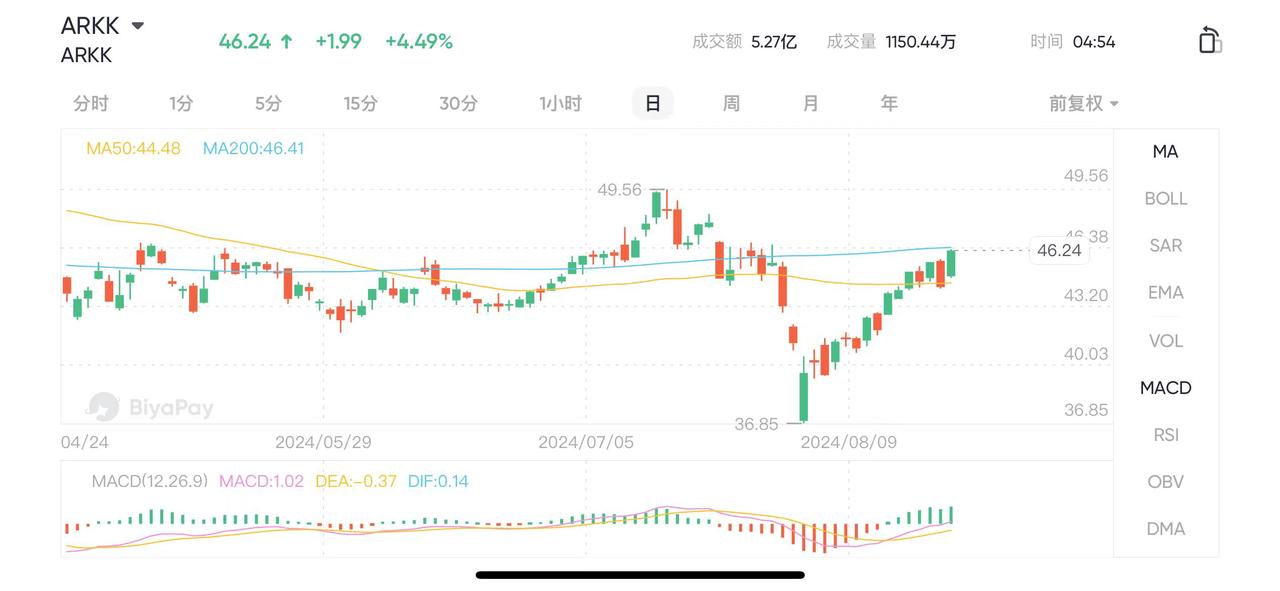
- ETF Code: ARKK
- Issuer: ARK ETF Trust
- Total Management Fee: 0.75%
- 3-Year Return: -28.64%
- 1-Year Return: +21.16%
- 3-Month Return: -4.28%
Tracking the 3D Printing Industry ETF: PRNT (3D Printing ETF)
PRNT is another ETF under ARK Invest, but it is a passive fund that aims to track the Total 3D-Printing Index, reflecting the stock performance of 3D printing companies worldwide. With the development of 3D printing technology, its services have expanded from consumer goods to industries such as healthcare, aviation, and construction. The top five stocks by weight in this index are XONE, HPQ, RSW, STMN, and TRMB.
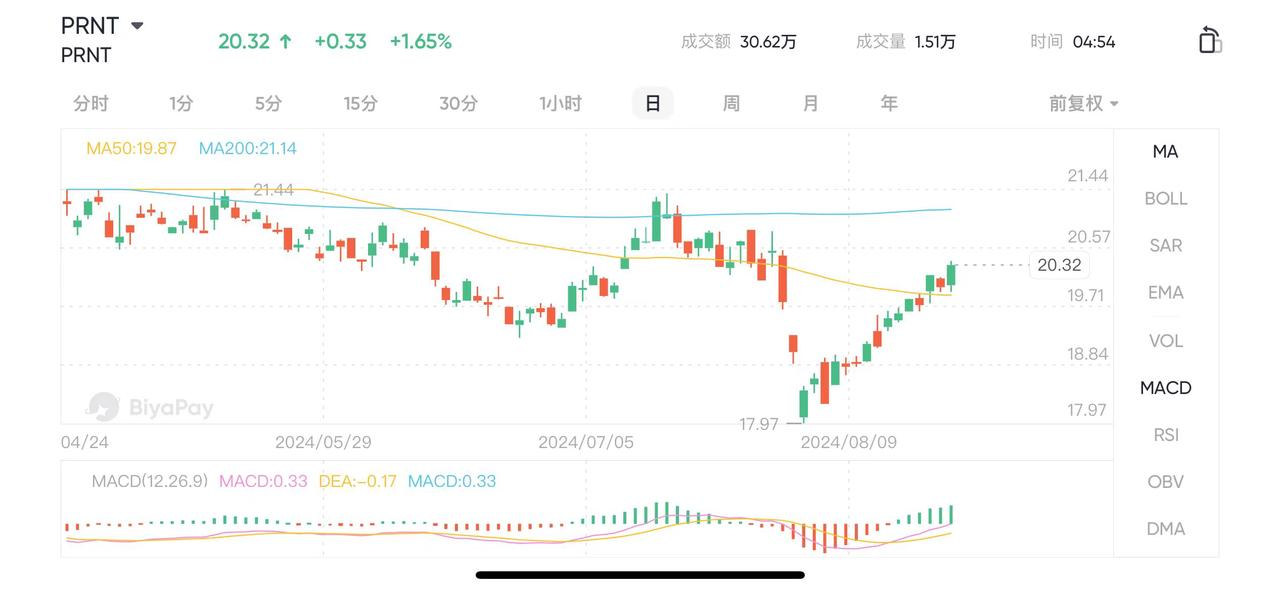
- ETF Code: PRNT
- Issuer: ARK ETF Trust
- Total Management Fee: 0.66%
- 3-Year Return: -18.45%
- 1-Year Return: -6.03%
- 3-Month Return: -5.78%
Tracking Electronic Payments ETF: IPAY (ETFMG Prime Mobile Payments ETF)
IPAY aims to track the performance of the Prime Mobile Payments Index, which includes 45 stocks related to electronic, smart, and credit card payments. The top five holdings by weight are Square, Mastercard, PayPal, FIS, and Visa. This ETF allows investors to capture the demand for online shopping and electronic payments driven by the pandemic, but its total management fee is relatively high for a passive fund. Additionally, its risk profile is similar to other sector-specific ETFs, with weaker risk diversification.
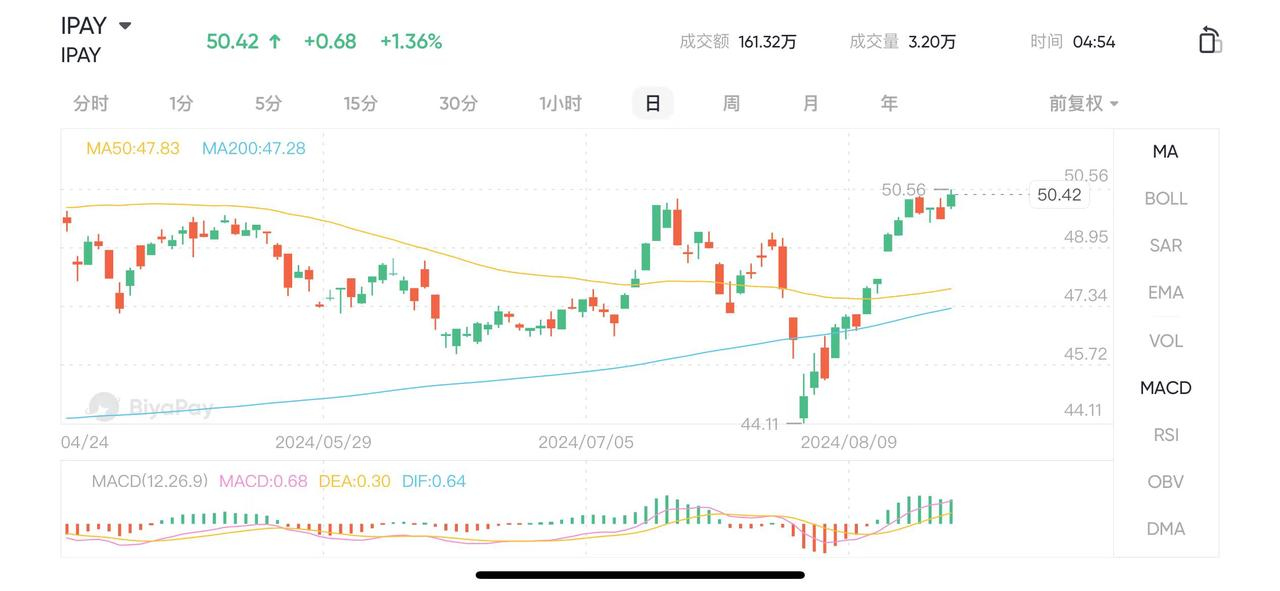
- ETF Code: IPAY
- Issuer: ETFMG
- Total Management Fee: 0.75%
- 3-Year Return: -12.23%
- 1-Year Return: +14.54%
- 3-Month Return: +6.06%
Tracking Airline Stocks ETF: JETS (US Global Jets ETF)
Global airline demand plummeted due to the COVID-19 pandemic, causing airline stocks to drop sharply from pre-pandemic highs. However, with the advent of vaccines, the market’s “recovery trade” has led to a rebound in airline stocks. JETS aims to track the U.S. Global Jets Index, reflecting the stock performance of U.S. airline-related companies. The top three holdings in this index are Southwest Airlines, American Airlines, and Delta Air Lines. However, airline stock performance is also affected by factors such as oil prices, high inflation, and the pace of global travel recovery, so investors should be mindful of potential volatility.

- ETF Code: JETS
- Issuer: U.S. Global Investors
- Total Management Fee: 0.6%
- 3-Year Return: -8.09%
- 1-Year Return: +11.39%
- 3-Month Return: +7.55%
Tracking Global Semiconductor ETF: SOXX (iShares PHLX Semiconductor ETF)
SOXX aims to track the Philadelphia Semiconductor Index, reflecting the stock performance of the global semiconductor industry, including upstream, midstream, and downstream companies in chip manufacturing. Well-known companies in this index include Intel, NVIDIA, Qualcomm, and TSMC. Its biggest selling point is its successful capture of the global “chip shortage” during the pandemic, following the explosive growth in semiconductor stock prices. SOXX may appeal to investors looking to capitalize on the chip shortage opportunity.
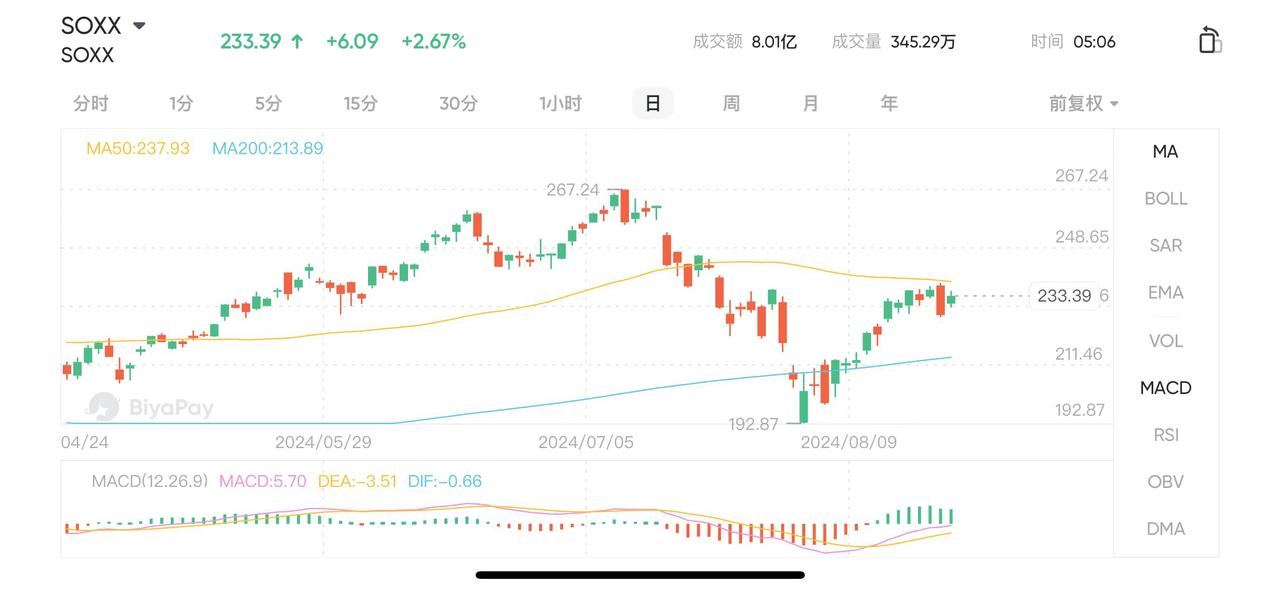
- ETF Code: SOXX
- Issuer: iShares
- Total Management Fee: 0.35%
- 3-Year Return: +16.06%
- 1-Year Return: +56.96%
- 3-Month Return: +9.59%
Tracking Consumer Staples ETF: VDC (Vanguard Consumer Staples ETF)
Even during the pandemic, consumer demand for staples did not disappear, and the stock prices of relevant ETFs have surpassed pre-pandemic highs, showing relatively strong defensive capabilities. VDC aims to track the MSCI US IMI Consumer Staples 25/50 Index under Morgan Stanley, which includes a variety of U.S. beverage, food, and household goods companies, reflecting the performance of the U.S. consumer staples sector. The management fee is also reasonable. The top five companies in this index are P&G, Coca-Cola, Walmart, Pepsi, and Costco.
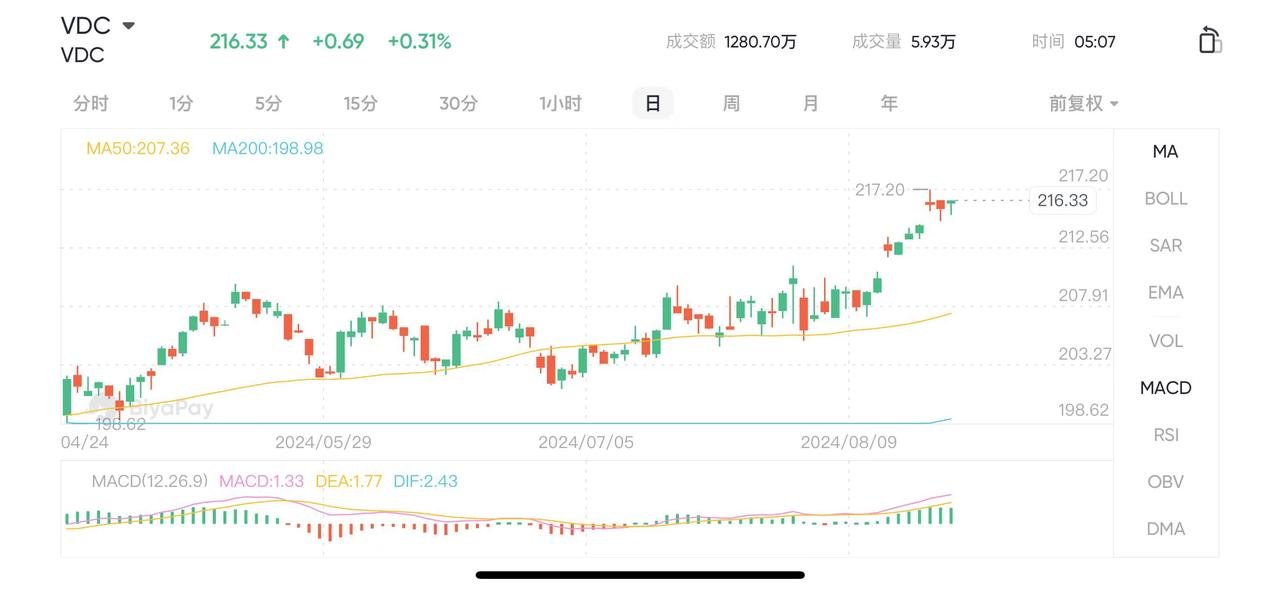
- ETF Code: VDC
- Issuer: Vanguard
- Total Management Fee: 0.10%
- 3-Year Return: +5.98%
- 1-Year Return: +2.87%
- 3-Month Return: +4.64%
Capital Preservation and High Dividend Defensive ETF: NOBL (ProShares S&P 500 Dividend Aristocrats ETF)
For investors aiming for capital preservation and a defensive strategy, the S&P 500 Dividend Aristocrats might help eliminate the hassle of stock picking. NOBL is designed to track the S&P 500 Dividend Aristocrats Index, comprising companies with at least 25 years of consecutive dividend growth. These are primarily large-cap, blue-chip, and highly liquid stocks, including companies like 3M, Abbott, and Otis Elevator Company. While NOBL’s overall performance is attractive to conservative investors, it excludes growth stocks with lower dividends, which might cause it to underperform the broader market.

- ETF Code: NOBL
- Issuer: ProShares
- Total Management Fee: 0.35%
- 3-Year Return: +4.55%
- 1-Year Return: +6.09%
- 3-Month Return: +2.42%
Tracking the Financial Sector ETF: XLF (Financial Select Sector SPDR Fund)
XLF tracks the S&P Financial Select Sector Index, with Berkshire Hathaway B, led by Warren Buffett, and JPMorgan Chase, the largest U.S. bank, each comprising over 12% of its weight. The index includes companies in insurance, investment banking, commercial banking, and consumer finance sectors. Since XLF’s holdings are concentrated in the financial sector, interest rates and economic conditions significantly impact the performance of its constituent stocks. Investors should monitor changes in interest rates, the pace of the U.S. economic recovery, and how the Federal Reserve responds to a high inflation environment.
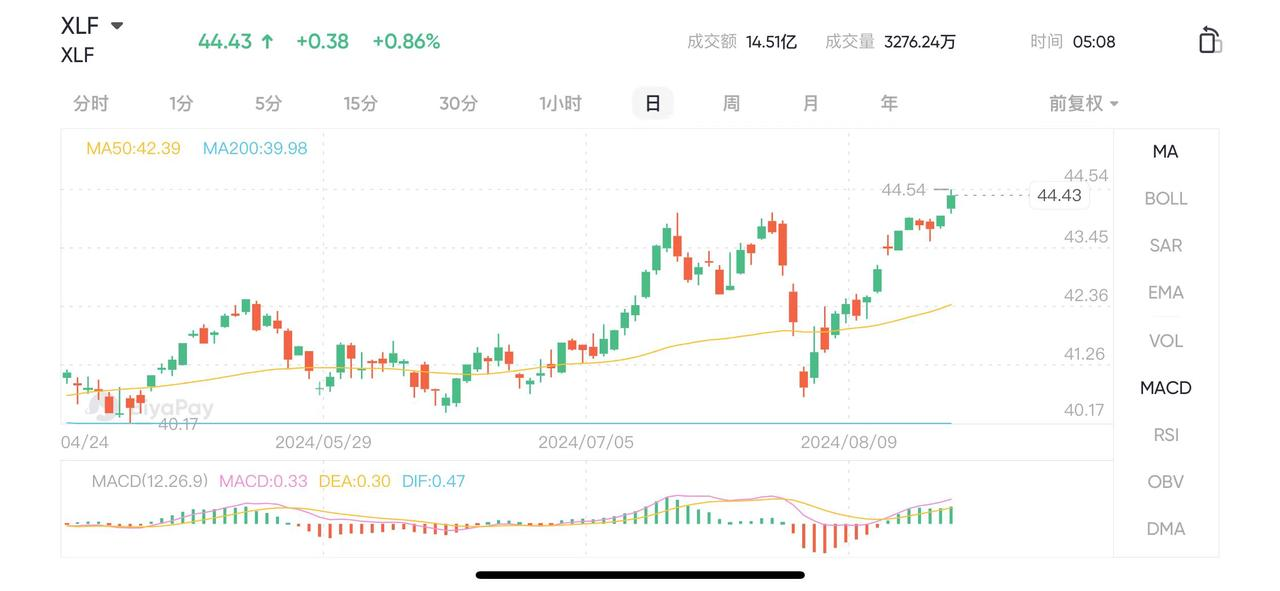
- ETF Code: XLF
- Issuer: SPDR State Street Global Advisors
- Total Management Fee: 0.09%
- 3-Year Return: +5.61%
- 1-Year Return: +23.84%
- 3-Month Return: +4.54%
Tracking the Real Estate ETF: VNQ (Vanguard Real Estate ETF)
In addition to buying company shares on the stock market, investors can also engage in real estate-related investments through Real Estate Investment Trusts (REITs) on the stock market. VNQ aims to track the MSCI US IMI/Real Estate 25-50 Index, which includes various large, medium, and small U.S. REITs. Investors can effectively invest in U.S. real estate through VNQ, but fluctuations in the U.S. real estate market directly impact VNQ’s price. For instance, following the 2007 U.S. housing bubble burst, VNQ also saw a significant decline.
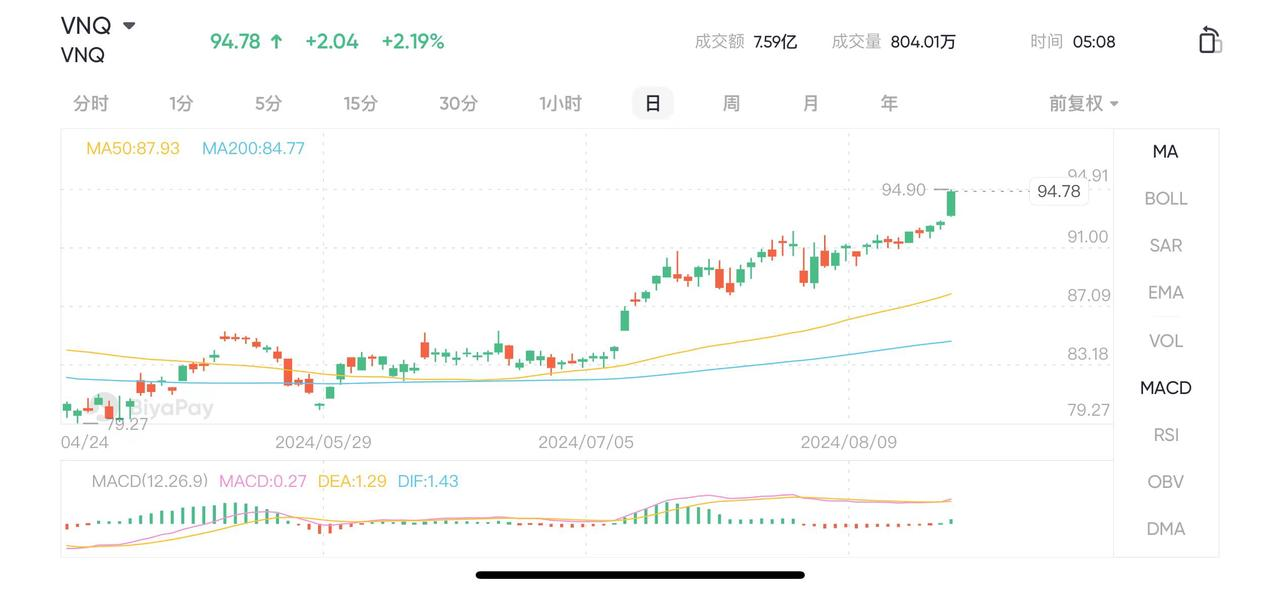
- ETF Code: VNQ
- Issuer: Vanguard
- Total Management Fee: 0.12%
- 3-Year Return: -3.56%
- 1-Year Return: -0.46%
- 3-Month Return: -4.36%
Tracking Oil Prices ETF: USO (United States Oil Fund)
In April 2020, the price of WTI crude oil futures contracts historically fell into negative territory. USO, listed on the U.S. stock market, invests in WTI crude oil futures contracts on the New York Mercantile Exchange, aiming to track the spot price of oil. USO allows investors to easily engage in oil price-related investments in the U.S. stock market, capturing the post-pandemic oil price recovery wave. However, investors should be aware that oil ETFs involve trading futures contracts, which come with risks associated with roll yield (the cost of rolling over futures contracts). This means that, in some cases, oil prices may rise, but the ETF may not keep up, and USO’s long-term performance has been disappointing.
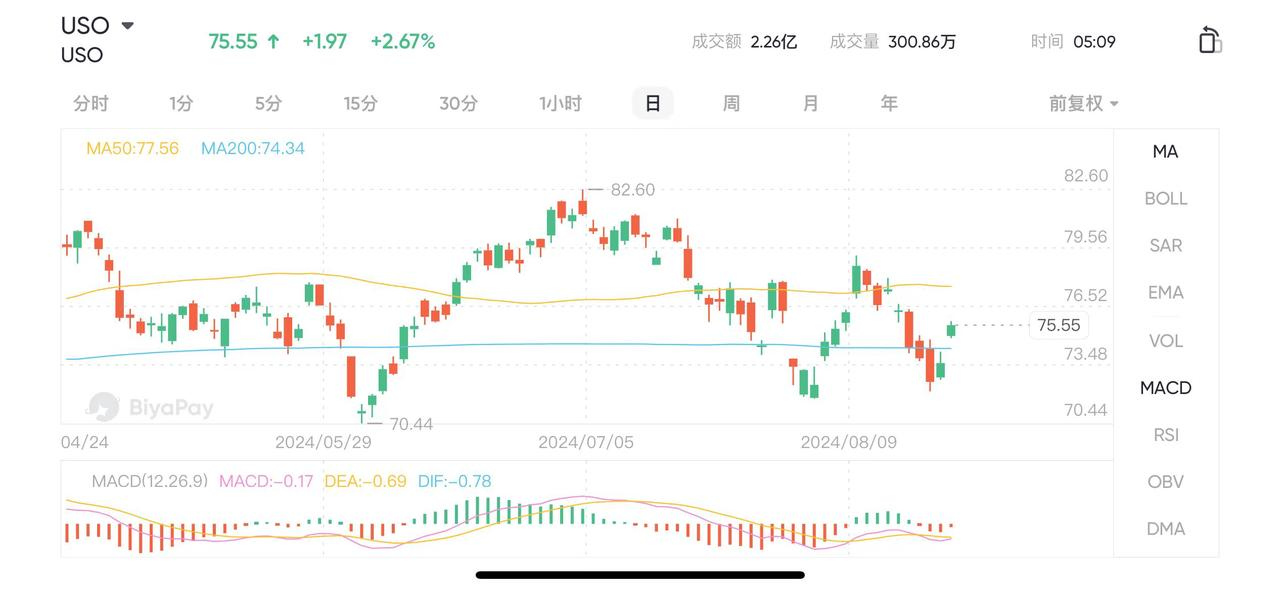
- ETF Code: USO
- Issuer: USCF Investments
- Total Management Fee: 0.70%
- 3-Year Return: +22.01%
- 1-Year Return: +16.59%
- 3-Month Return: +10.95%
Tracking Gold Prices ETF: GLD (SPDR Gold Trust SPDR Gold Shares)
Following the Federal Reserve’s “unlimited QE” (Quantitative Easing), the supply of U.S. dollars increased, and market risk aversion heightened, making gold a popular target for investment. If investors are interested in investing in gold, they can buy the GLD ETF during U.S. stock trading hours. GLD is backed by physical gold stored in trust bank vaults, allowing investors to indirectly own physical gold, avoiding the buy-sell price spread associated with traditional gold shop transactions. However, since there is a similar ETF (code 2840) listed on the Hong Kong Stock Exchange, investors can choose where to buy based on platform fees or tax considerations.
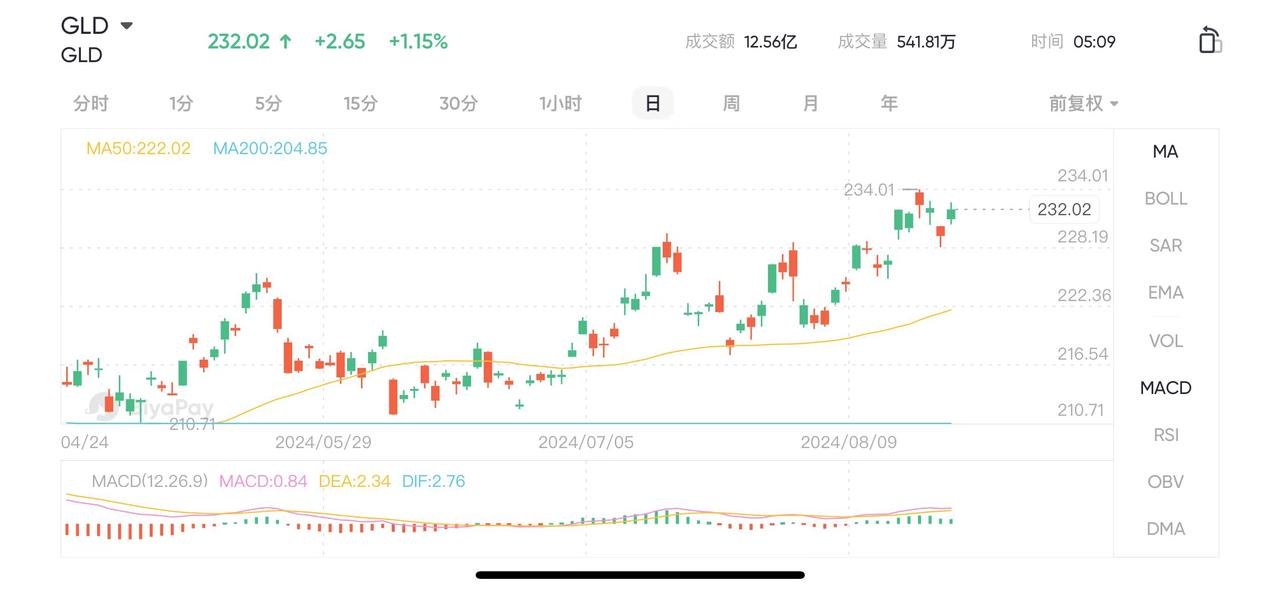
- ETF Code: GLD
- Issuer: SPDR State Street Global Advisors
- Total Management Fee: 0.40%
- 3-Year Return: +8.85%
- 1-Year Return: +15.90%
- 3-Month Return: +12.25%
Tracking Bond ETFs: BND (Vanguard Total Bond Market Index Fund ETF)
Besides combining stocks, REITs, or commodities in a portfolio, investors can also invest in bonds through bond ETFs. BND, for example, combines various investment-grade bonds in the U.S., including government bonds, corporate bonds, and mortgage-backed securities (MBS), but excludes inflation-protected securities (TIPS) and tax-exempt bonds (municipal bonds). BND’s management fee is as low as 0.04%, and all of its holdings are rated BBB or above by Standard & Poor’s, with over 40% in U.S. Treasuries and more than 30% in BBB and A-rated bonds. Investing in bonds can provide stable returns, offering some asset protection even during economic downturns. However, investors should not expect bonds to deliver high growth or substantial returns.
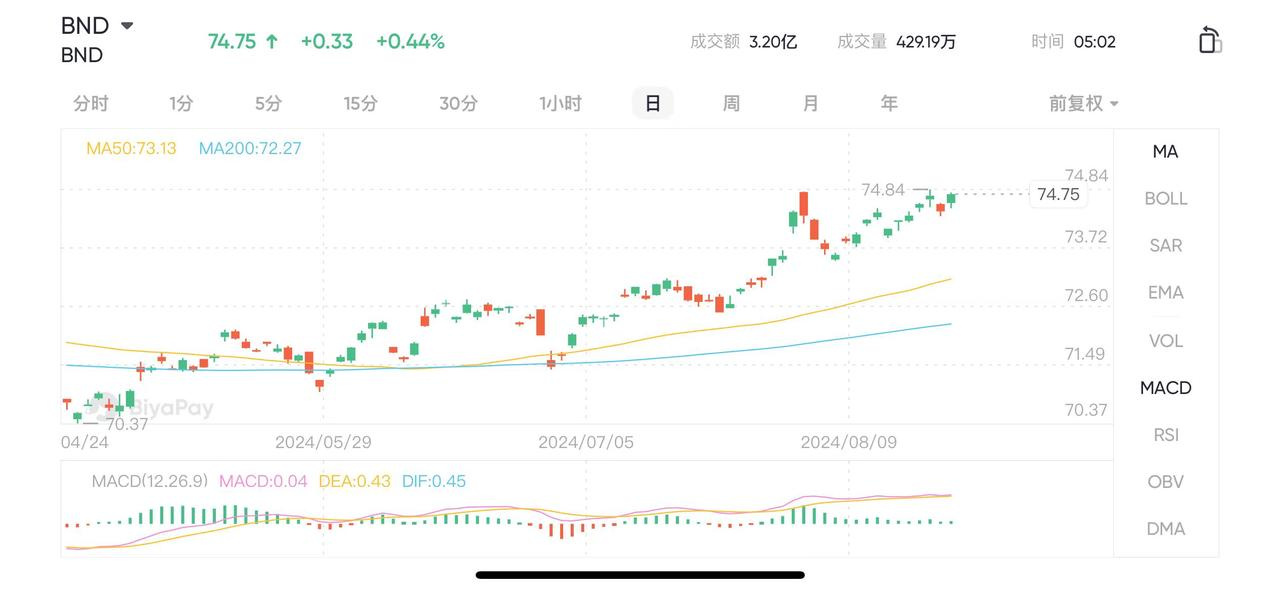
- ETF Code: BND
- Issuer: Vanguard
- Total Management Fee: 0.03%
- 3-Year Return: -3.49%
- 1-Year Return: -1.36%
- 3-Month Return: -2.93%
Tracking Emerging Markets ETF: VWO (Vanguard Emerging Markets Stock Index Fund ETF)
In the U.S. stock market, investors are not limited to investing in the U.S. financial economy; they can also invest in various emerging markets through ETFs. VWO, for instance, aims to track the “FTSE Emerging Markets All Cap China A Inclusion Index,” which includes large, medium, and small-cap stocks from 24 emerging market countries, totaling between 4,000 and 4,500 stocks. These markets include Latin America, Europe, and Asia, with China, Taiwan, India, Brazil, and South Africa being the top five countries, accounting for 80% of its weight. Investors should ensure that the geographic focus of any emerging market ETF aligns with their preferences and note that while these cross-market ETFs diversify risk, they also dilute returns.
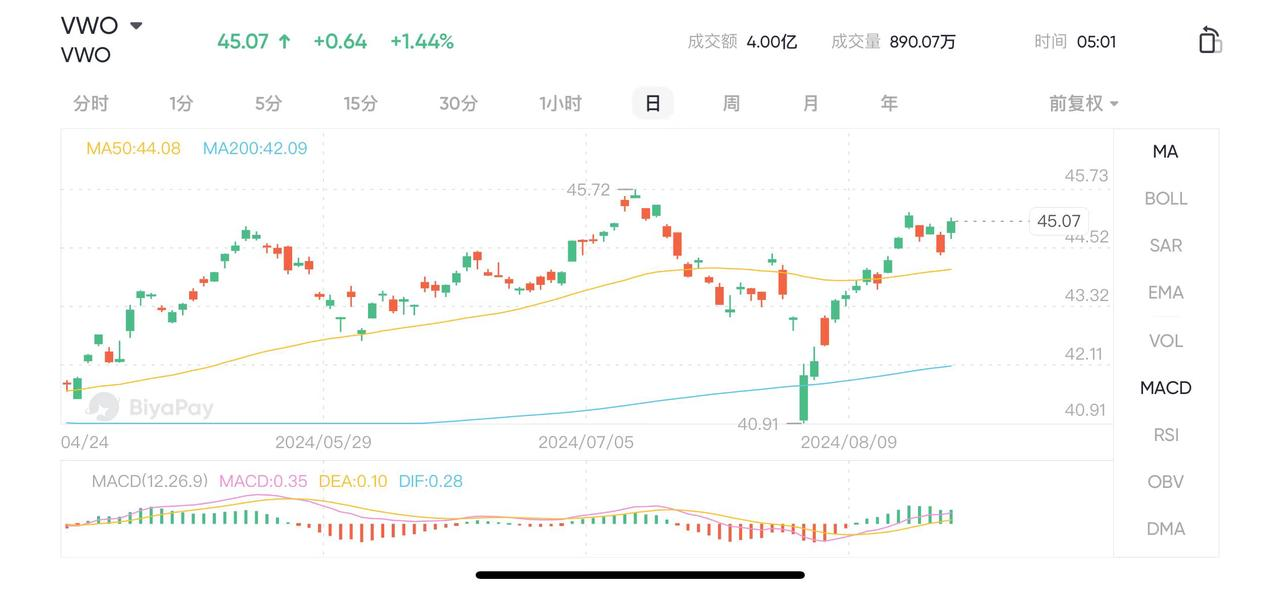
- ETF Code: VWO
- Issuer: Vanguard
- Total Management Fee: 0.08%
- 3-Year Return: -3.95%
- 1-Year Return: +9.34%
- 3-Month Return: +6.78%
Tracking Global Market ETF: VT (Vanguard Total World Stock ETF)
In addition to diversifying across multiple emerging markets, investors can also diversify their investments globally through a world ETF. VT aims to track the FTSE Global All Cap Index, which includes large, medium, and small-cap stocks globally (primarily large-cap). With a management fee as low as 0.08%, it allows investors to simultaneously invest in over 8,000 companies worldwide. More than 50% of VT’s holdings are in U.S. companies, followed by Japan, the UK, China, and others. The advantage of a global ETF is that investors don’t need to worry about choosing which market or stock to invest in, but because it invests across the global market, it’s naturally challenging to outperform the market.
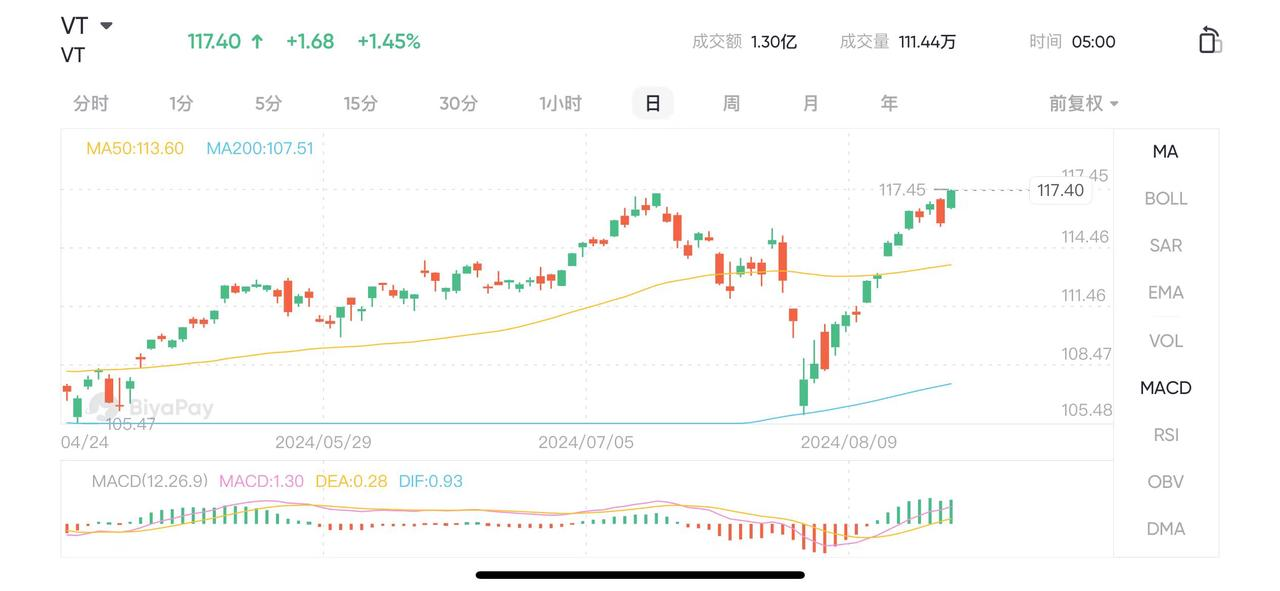
- ETF Code: VT
- Issuer: Vanguard
- Total Management Fee: 0.10%
- 3-Year Return: +3.91%
- 1-Year Return: +16.78%
- 3-Month Return: +3.96%
Leveraged and Inverse ETFs: An Introduction
What is a Leveraged ETF?
Leverage is a concept that allows you to increase the value of your position in the financial market without additional capital. In investing, the funds used to open and maintain leveraged trades are known as margin, which is also referred to as margin trading.
What is a Hedging/Inverse ETF?
Inverse ETFs track an index but have returns that move in the opposite direction of the index. If the index rises, the price of the inverse ETF falls; if the index falls, its price rises. Regulatory authorities require that these products be labeled as Leveraged and Inverse products (L&I products) rather than ETFs, though they are traded similarly to regular stocks and ETFs.
3x S&P 500 Inverse ETF: SQQQ (ProShares UltraPro Short QQQ)
ETFs not only allow for diversified investments across markets, indices, sectors, and commodities, but now can also achieve hedging or leverage effects. SQQQ, for example, is a “triple short” Nasdaq index ETF, meaning that if the Nasdaq index drops 7% in a day, SQQQ investors can gain close to 21% returns that day. SQQQ allows major players to hedge the Nasdaq with only one-third of the capital, effectively “locking in” and protecting assets. Although some risk-seeking investors may use this to short the U.S. market, it is advised not to be overly aggressive.
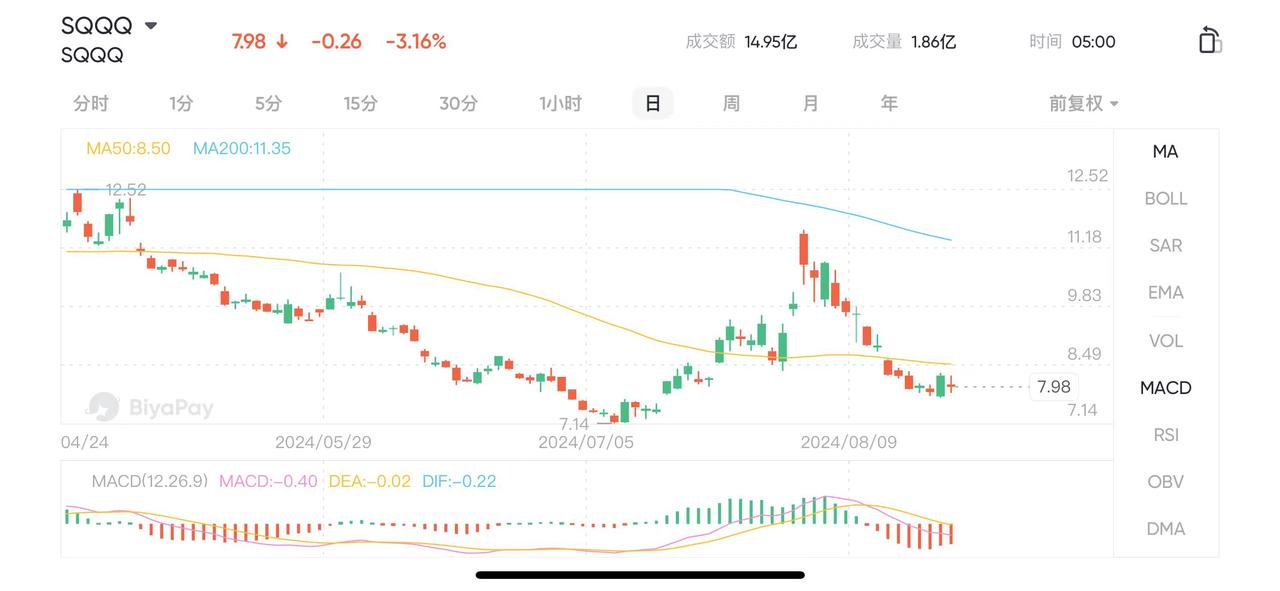
- ETF Code: SQQQ
- Issuer: ProShares
- Total Management Fee: 0.95%
- 3-Year Return: -38.23%
- 1-Year Return: -55.87%
- 3-Month Return: -4.94%
3x S&P 500 Leveraged ETF: TQQQ (ProShares UltraPro QQQ)
What is TQQQ? In contrast to SQQQ, TQQQ targets a triple daily return on the Nasdaq index, meaning that if the Nasdaq rises 7%, TQQQ aims for a 21% increase. However, like SQQQ, investors need to be mindful of the “volatility decay” of leveraged products. In a sideways market (a market without a clear upward or downward trend), after a 21% rise and a 21% drop, the stock price would fall below the original price. Therefore, neither should be held long-term and should only be used for short-term trading.
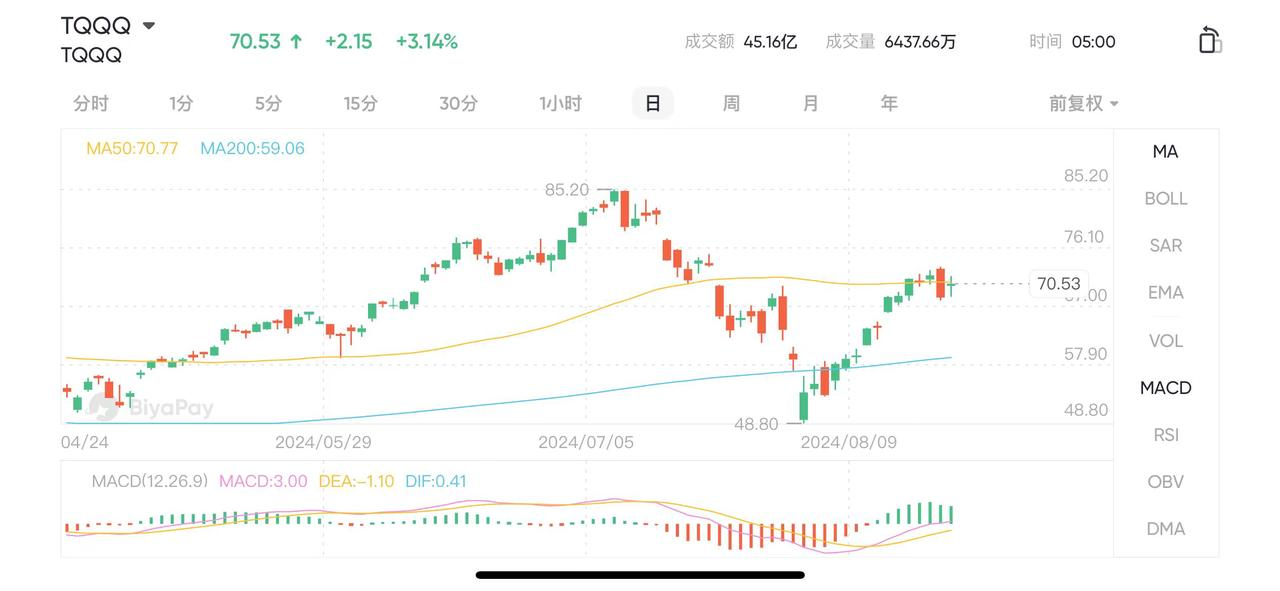
- ETF Code: TQQQ
- Issuer: ProShares
- Total Management Fee: 0.20%
- 3-Year Return: +8.62%
- 1-Year Return: +32.47%
- 3-Month Return: +1.93%
Hong Kong ETF vs. U.S. ETF: What Are the Differences?
Investors can now use ETFs to invest in both the Hong Kong and U.S. stock markets. How should investors choose between Hong Kong ETFs and U.S. ETFs? Here is a comparison of the two:
Product Variety: More Options with U.S. ETFs
The U.S. market offers over 2,000 ETF products for investors to choose from, while the Hong Kong market only has about 200. Even within the same category, U.S. ETFs often offer multiple choices, meaning investors can select the product with better liquidity, lower management fees, and smaller tracking errors.
Management Fees: U.S. ETFs Might Be Lower
Due to intense competition among U.S. ETF issuers, lowering management fees has become a strategy to attract investors. For example, the management fee for VOO, which tracks the S&P 500 index, is only 0.03%, while a similar ETF in Hong Kong would have a management fee of around 0.18%.
Trading Volume: Higher in U.S. ETFs
The U.S. market generally sees more trading activity than the Hong Kong market. Investors should note that low trading volume in an ETF may prevent quick entry or exit from the market, and price fluctuations due to low volume could expose investors to additional risk.
Trading Platform Fees: Vary by Platform
Some trading platforms charge different fees for Hong Kong and U.S. ETFs. If an investor’s preferred ETF is listed on both the Hong Kong and U.S. markets, they should consider purchasing it on the market with lower trading fees.
U.S. Tax Rate: Dividend Taxation up to 30%
Some ETFs pay dividends to investors, but due to different tax agreements between countries and the U.S., the tax rate on dividend income varies. Investors should also factor in these costs and be cautious not to overemphasize dividends in the U.S. market.
How to Buy ETFs?
Investors can purchase ETFs in the U.S. market through major brokers and banking platforms. Some platforms even offer commission-free and fee-free services.

























